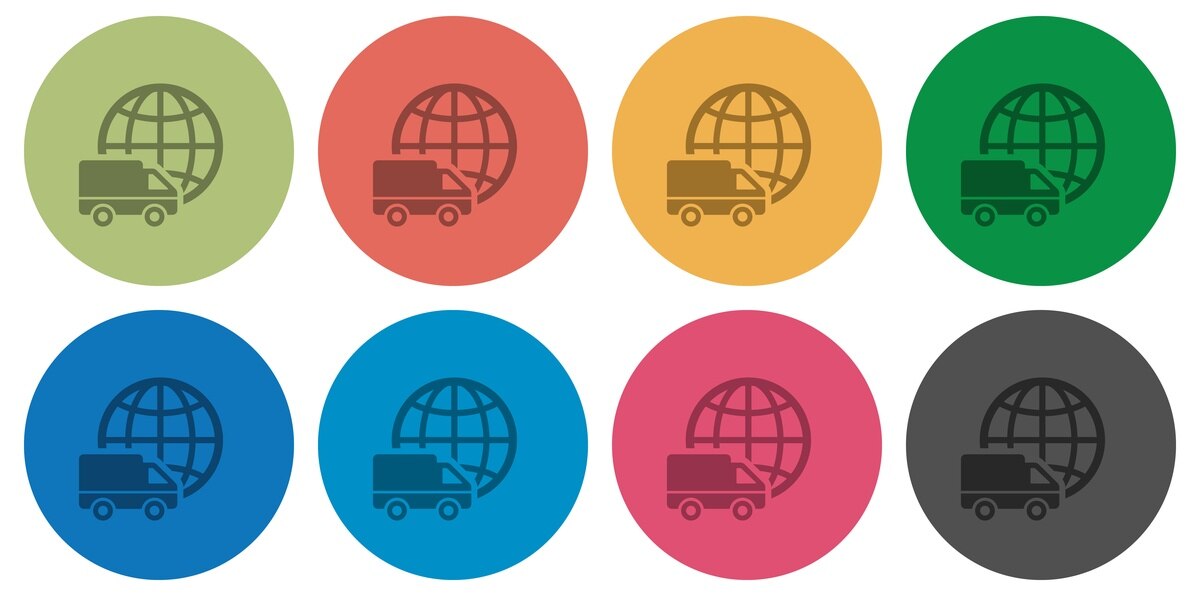In years gone by, most retailers could get by partnering with one shipping carrier to deliver their products. In fact, this was often the preferable method of managing shipping because it allowed businesses to negotiate better shipping rates and streamline the shipping process.
.jpg)
Why should you have a multi-carrier shipping strategy?
Do you want to power up your global shipping strategy?
Get started by testing out our seamless TradeGecko shipping integrations today.
Today, however, carrier services and customer expectations are rapidly changing, so leveraging different options as part of a multi-carrier shipping strategy is critical to maintaining a competitive advantage and providing a good customer experience.
In partnership with Shippit, a shipping engine for model retail, we’ve compiled a handful of ways a multi-carrier shipping strategy can benefit your business.

The advantages of using a multi-carrier shipping strategy
It’s cost-effective
Using a single shipping provider during the early stages of business makes sense because order volumes usually aren’t high enough to justify using more than one carrier. As business expands and online sales increase, however, failing to diversify your shipping strategy to meet your growing needs puts you at risk of inefficient order fulfillment and rising shipping costs.
A multi-carrier shipping strategy is one the best ways to “rate shop” providers so that you can use the most cost-effective shipping option for every order. Different delivery locations, package sizes, and so on come at different shipping costs, so it makes sense to pick and choose providers as needed to keep shipping costs as low as possible.
You benefit from different carrier features
No two shipping providers are exactly the same: each one has its own advantages and features to suit different types of freight and customers. Having a list of shipping providers to choose from means you can offer the fastest shipping times and best customer experience for every order, all while keeping rates low.
For example, couriers tend to be the shipping option of choice in metro areas thanks to their ability to make multiple delivery runs and their multiple collection points. In regional areas, however, major carrier networks are usually preferable simply because they offer the widest coverage.
Some shipping providers also specialize in handling specific freight – such as refrigerated or bulky items – so it’s especially important to have multiple options at your disposal if you deliver goods that don’t fit into the standard freight profile.
It keeps customers happy by offering multiple delivery options
The rise of eCommerce has heralded a new era in customer expectation: customers want products shipped fast, cheap, and via a method that suits them. 61% of customers are willing to pay more for same-day delivery, which goes to show that fast shipping is of high importance, even if it comes at a great price. With same-day delivery expected to be the norm by 2023, bringing on a carrier that can honor this is fast becoming a necessity, not an option.
Offering a variety of shipping methods provides a level of flexibility that customers have come to expect as standard, and it also puts pricing consideration in their hands.
It improves the delivery experience
As we’ve touched upon, having a multi-carrier shipping strategy gives you the flexibility to choose the best carrier for the job based on factors like cost and service level. But it doesn’t end there. Shipping providers want your business, which means using different carriers gives you more leverage to negotiate on cost or service. After all, if a carrier can’t meet your expectations, you have the freedom to go elsewhere.

Key takeaways
1: Carriers have different strengths and one couldn’t possibly deliver on all your needs. Customers expect choice, which means a multi-carrier shipping strategy is key to meeting expectations.
2: A multi-carrier approach gives you power to negotiate costs. With multiple carriers at your disposal, you can “rate shop” for the best deals based on your needs for each order.
3: Access to multiple carriers improves service and customer experience. By utilizing different shipping providers, you can hold carriers accountable for failing to meet expectations and switch providers as needed.
Shipping providers that integrate with TradeGecko
Shippit allows you to select a preferred carrier based on customer satisfaction, cost and service. You will know when deliveries moving to a particular region, customer or via a particular carrier are not meeting service levels. You can also hold carriers accountable for failing to meet expectations, and provide data to back-up rate negotiations.
Alongside standard shipping services, Amazon FBA handles the entire fulfillment process for you – including picking and packing, customer service, order updates, and returns. If you don’t have the resources to handle increased customer demand or just don’t want the added responsibility, the FBA fulfillment option is probably the right choice for you.
Built for eCommerce, ShipStation seamlessly integrates with shopping carts, eCommerce marketplaces and more to enable end-to-end order management. From ShipStation’s web-based app, you can manage all your orders and shipping carriers in the one place, or enable shipping automation to be as hands-on or hands-off as you like.
StarShipIT is an integrated shipping and tracking software supporting live rates at checkout, shipping label generation and branded tracking pages. Alongside the integration with TradeGecko, StarShipIT connects with Shopify, WooCommerce, Magento and more, allowing you to manage your entire order fulfillment process in the one place.
There are many more shipping carriers that integrate directly with TradeGecko, and we also offer custom integrations via our API. Get a closer look at our shipping software integrations here.










